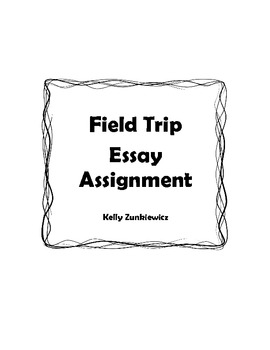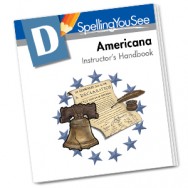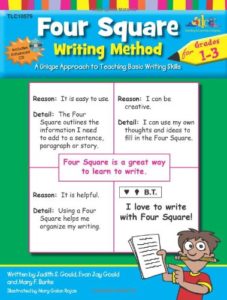- Field Trips Picturesmr. Slack's 3rd Grade Language Arts Worksheets
- Field Trips Picturesmr. Slack's 3rd Grade Language Arts Lesson
- Field Trips Picturesmr. Slack's 3rd Grade Language Arts Answer
- Field Trips Picturesmr. Slack's 3rd Grade Language Arts
Field Trips
Field Trips Picturesmr. Slack's 3rd Grade Language Arts Worksheets
Write a story featuring Revolutionary War Era clothing in comparison to modern day clothing. Write a sequence of dressing in Revolutionary War Era clothes. In considering the advantages and disadvantages of such clothing, discuss the potential of death or injury when cooking over an open fire. Third Grade Language Arts games focus on the parts of speech, such as prepositions, coordinating conjunctions, and possessive pronouns. These parts of speech tend to be confusing for some children, as they move from the basic nouns and pronouns to the more complex parts of speech. These enticing games provide hours of educational learning along.
NC: Vis Arts: 2.3, 4.1, 5.6, 5.1; ELA: 3.03, 3.05, 4, 5; 4,5; 4,5; 6; 76; 6 Soc Stud: 3rd, 2,7.3; 4th, 1.2, 5.1, 11.1; 8th, 1.3 SC: ELA: 8th - IV-A, B, J; V-B Soc Stud: 3.2.5, 3.2.6, 4.1.7, 8.1.2, 8.2.5 Vis Arts: Comp 2-3
To provide the opportunity for students to identify clothing of the Revolutionary War Era in comparison with modern clothing.
Objective(s)
The student will identify the names of the clothes of this period and how long it took to put on the clothes.
The student will view pictures of Revolutionary War Era clothing and modern-day clothing and compare the two. The student will try on clothes worn by a Revolutionary War Era boy or girl.
Background
Revolutionary War Era children wore many layers of clothes depending on the season. Children living on plantations wore better quality clothing than those in the backcountry. Girls wore long dresses, dust caps (mob caps) and aprons, while boys wore knee-knockers and ruffled shirts.
Materials
Field Trips Picturesmr. Slack's 3rd Grade Language Arts Lesson
Teachers may borrow reproduction children's clothing for the students to try on while they are visiting the battlefield.
Procedure
ON-SITE ACTIVITIES
1. Have students try on clothes worn during the Revolutionary War Era. Explain why each piece of clothing was necessary.
2. Have children discuss the pros and cons of Revolutionary War Era clothing.
3. Time children dressing to determine how long it takes to dress in Revolutionary War Era clothes.
POST-SITE ACTIVITIES
1. Make drawings of the different types of clothes worn during the Revolutionary War Era.
2. Have students make and design their own paper dolls of this period with appropriate clothing.
3. Write a story featuring Revolutionary War Era clothing in comparison to modern day clothing.
4. Write a sequence of dressing in Revolutionary War Era clothes.
5. In considering the advantages and disadvantages of such clothing, discuss the potential of death or injury when cooking over an open fire.


This how-to article accompanies the feature 'Internet Explorers: Virtual Field Trips Are More Than Just Money Savers.'
How do you keep virtual field trips from becoming the modern-day version of the filmstrip -- something students just passively watch? A few tips from the pros:
Have a Goal

'One thing I look for is a purpose,' says Angie Haynes, a media specialist at Altamaha Elementary School, in Baxley, Georgia, who is a fan of virtual field trips. 'I have found some really great tours that don't just take the students through some pictures but also have them searching for particular information and learning in-depth, specific things about their topic.' In other words, she says, make sure the trip explores an idea, not just a place.
Another practical idea is to use a virtual field trip to ready students for a real visit to a similar locale, says Chris Dede, a professor of learning technologies at Harvard University (and a member of The George Lucas Educational Foundation's National Advisory Council). 'Anything that would involve the same kind of knowledge and skills as doing it in the real world could prepare them to get the most out of the actual field trip,' he suggests.
Keep It Short
Dan Buettner, founder of the virtual field trip Blue Zones, points out that teachers are under increasing pressure to teach to testing standards, which doesn't leave much time for extras. That's why his sites basic lesson plans can be accomplished in ten minutes a day. 'The only way you make these successful is if you figure out how you can do them very quickly or after school,' he says.
Continue the Lesson Offline
One of Angie Haynes's favorite assignments is having students keep a travel journal of the countries they visit online. She supplements their virtual trips by bringing in food, music, or clothing from the cultures they're exploring.
University of Minnesota researcher Aaron Doering, who works with the Arctic-research project GoNorth!, favors what he calls a 'hybrid experience,' making sure the online adventure ties in with activities the class can do sans computer. 'It still comes down to pedagogy -- how it's going to be utilized within the classroom,' he says.
Link Up
The next wave in virtual adventure learning, Doering says, will be user-driven technologies that help students and teachers develop their own field trips to share with schools around the world. After all, who knows how to teach the geography of the Mississippi River better than a Midwestern teacher, or the history of the Spanish missions better than her California counterpart?

Similarly, says Harvard's Chris Dede, students can benefit from field trips that let classrooms around the world compare notes afterward via blogs or online chats. 'That kind of experience, where students realize that other people watching exactly the same thing have different interpretations, is very valuable,' he says.
Know the Limits
Virtual field trips work well for some teaching goals, but less so for others, cautions Florida Institute of Technology professor Tom Marcinkowski, a member of the North American Association for Environmental Education. They're useful for helping students learn about remote destinations, and some students may find online chats just as instructive as face-to-face lessons.
Field Trips Picturesmr. Slack's 3rd Grade Language Arts Answer
But if your goal is to foster a healthy appreciation for the outdoors, Marcinkowski says, you'll have to go outside. In addition to being good exercise, he adds, real field trips 'dispose students toward an appreciation of nature and a familiarity with it, a sense of comfort being in the natural world' -- and instilling that appreciation is a key to teaching good environmental citizenship.
Field Trips Picturesmr. Slack's 3rd Grade Language Arts
Kara Platoni is a freelance science writer in Oakland, California.
